- Tips for Growing Pepper from Seeds
- 1. Start indoors
- 2. Choose the right variety
- 3. Provide a warm and sunny location
- 4. Harden off seedlings
- 5. Transplant carefully
- 6. Water regularly
- 7. Provide support
- 8. Prune for better growth
- 9. Fertilize regularly
- 10. Harvest at the right time
- Choose the Right Variety
- Start Seeds Indoors
- Prepare the Soil
- 1. Choose a Good Location
- 2. Clear the Area
- 3. Test the Soil
- 4. Amend the Soil
- 5. Loosen the Soil
- 6. Create Raised Beds
- 7. Add Mulch
- 8. Water the Soil
- Provide Adequate Water and Sunlight
- Watering
- Sunlight
- Transplant Seedlings
- Space Plants Properly
- Consider the following tips for spacing pepper plants:
- Benefits of proper spacing:
- Additional tips:
- Support the Plants
- Stakes
- Cages
- Trellises
- Mulching
- Harvesting and Storage
- 1. Harvesting
- 2. Storing
- 3. Freezing
- 4. Preserving
- 5. Enjoying Your Peppers
- “Question-Answer”
- How long does it take for pepper seeds to germinate?
- Do I need to soak pepper seeds before planting?
- What is the best time of year to start growing pepper plants from seeds?
- How deep should I plant pepper seeds?
- Can I grow pepper plants from seeds indoors?
- “Video” Hot Pepper Growing Guide: Sow These Summer Veggies FIRST!
Growing your own peppers from seeds in your vegetable garden is a rewarding and cost-effective way to enjoy fresh, homegrown produce. Peppers are a versatile vegetable that can be used in a variety of dishes, from salads to salsas, and growing them from seeds allows you to choose from a wide variety of pepper varieties. Whether you prefer sweet bell peppers or spicy jalapenos, starting from seeds gives you the opportunity to experiment with different flavors and heat levels.
When it comes to growing peppers from seeds, there are a few key steps to follow. First, you’ll need to select the right pepper seeds for your garden. Look for seeds that are labeled as suitable for your climate and growing conditions. Some pepper varieties are better suited for hot, dry climates, while others thrive in cooler, more temperate areas. Additionally, choose seeds that align with your personal taste preferences in terms of flavor and heat level.
Once you have selected your pepper seeds, it’s important to properly prepare them for planting. Start by soaking the seeds in water for a few hours to help speed up the germination process. Then, plant the seeds in small containers filled with seed starting mix. Make sure to plant the seeds at the appropriate depth and provide them with ample sunlight and moisture for germination.
As your pepper plants grow, they will need to be transplanted into larger containers or directly into your vegetable garden. Before transplanting, harden off the plants by gradually exposing them to outdoor conditions over a period of several days. This helps them adjust to the change in temperature and reduces the risk of shock when they are planted in their final location.
Growing peppers from seeds in your vegetable garden requires patience and care, but the rewards are well worth the effort. By following these steps and providing your pepper plants with proper care, you can enjoy a bountiful harvest of fresh, flavorful peppers that are perfect for adding a burst of color and taste to your favorite recipes.
Tips for Growing Pepper from Seeds
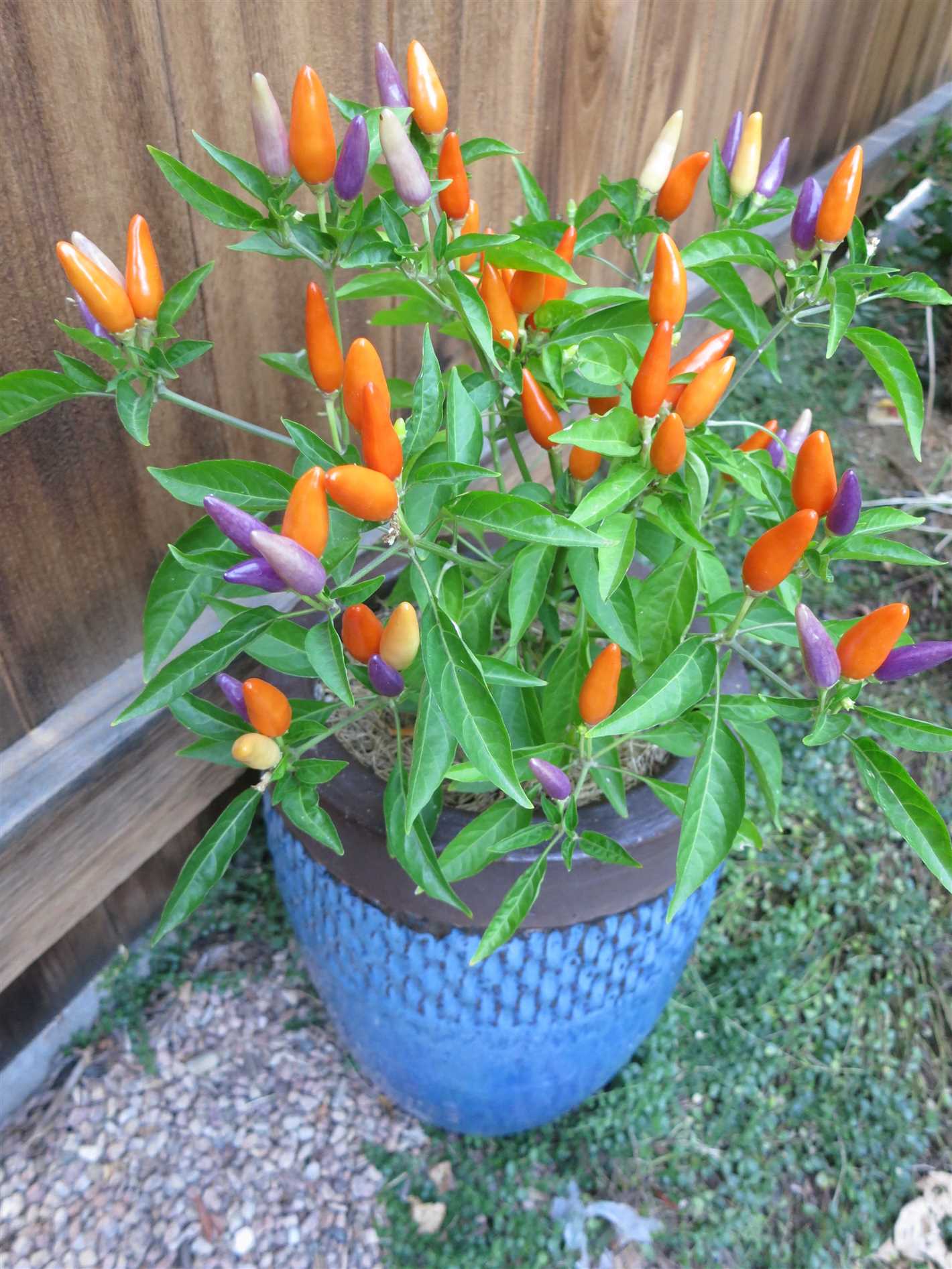
Growing peppers from seeds can be a rewarding and satisfying experience. Here are some tips to help you successfully grow peppers in your vegetable garden:
1. Start indoors
Peppers require a longer growing season, so it is best to start them indoors 6-8 weeks before the last frost date in your area. Use seed starting trays or containers filled with seed starting mix.
2. Choose the right variety
There are many different varieties of peppers available, ranging from sweet bell peppers to hot chili peppers. Choose a variety that suits your taste preferences and growing conditions.
3. Provide a warm and sunny location
Peppers thrive in warm and sunny locations, so choose a spot in your garden that receives at least 6-8 hours of direct sunlight per day. Ensure that the soil is well-draining and rich in organic matter.
4. Harden off seedlings
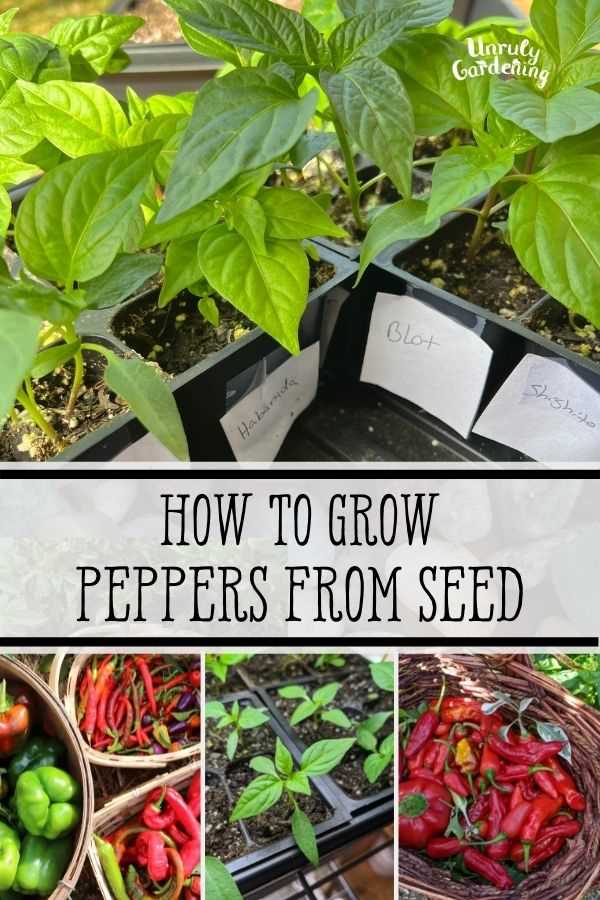
Before transplanting your seedlings outdoors, it is important to gradually acclimate them to the outdoor conditions. Start by placing them outdoors for a few hours each day, gradually increasing the time over the course of a week.
5. Transplant carefully
When transplanting your pepper seedlings, make sure to choose a cloudy day or transplant them in the evening to minimize transplant shock. Dig a hole slightly larger than the root ball and gently place the seedling in the hole, backfilling with soil.
6. Water regularly
Peppers require consistent moisture, so make sure to water them regularly. Avoid overwatering, as this can lead to root rot. Mulching around the plants can help to retain moisture in the soil.
7. Provide support
As the pepper plants grow, they may need support to prevent them from falling over. Install stakes or cages early on to provide support for the plants. This will help to maintain an upright habit and prevent branches from breaking.
8. Prune for better growth
Pruning pepper plants can help to improve air circulation, reduce the risk of diseases, and stimulate better growth. Remove any suckers or side shoots that develop in the leaf axils, as well as any damaged or diseased foliage.
9. Fertilize regularly
Peppers are heavy feeders and benefit from regular fertilization. Apply a balanced fertilizer according to the package instructions once every 4-6 weeks during the growing season. Avoid over-fertilizing, as this can lead to excessive foliage growth at the expense of fruit production.
10. Harvest at the right time
Peppers can be harvested at different stages of ripeness, depending on your preference. Most peppers are ready to be harvested when they reach their mature color, whether it’s green, red, yellow, or orange. Use a sharp pair of scissors or shears to harvest the peppers, cutting them just above the stem.
By following these tips, you can successfully grow peppers from seeds and enjoy a bountiful harvest of delicious and vibrant peppers in your vegetable garden.
Choose the Right Variety
When it comes to growing peppers from seeds in your vegetable garden, it is important to choose the right variety. There are many different types of peppers available, each with its own unique characteristics and flavors. Here are some factors to consider when selecting the right variety:
- Heat Level: Peppers can range from mild to extremely hot. Decide whether you prefer a milder flavor or if you enjoy the heat and choose a variety accordingly.
- Size and Shape: Peppers come in various sizes and shapes, such as bell peppers, banana peppers, and chili peppers. Consider how you plan to use the peppers in your cooking and select a variety that matches your needs.
- Color: Peppers can be green, red, yellow, orange, or even purple. Think about the visual appeal you want in your garden and the colors that would complement your other plants.
- Growing Conditions: Different pepper varieties have specific requirements when it comes to sunlight, temperature, and soil conditions. Ensure that the variety you choose is suitable for your garden’s environment.
Take your time to research different pepper varieties, read seed descriptions, and consider your own preferences before making a final decision. Growing the right variety of peppers will not only enhance the flavor of your dishes but also make your vegetable garden a colorful and vibrant space.
Start Seeds Indoors
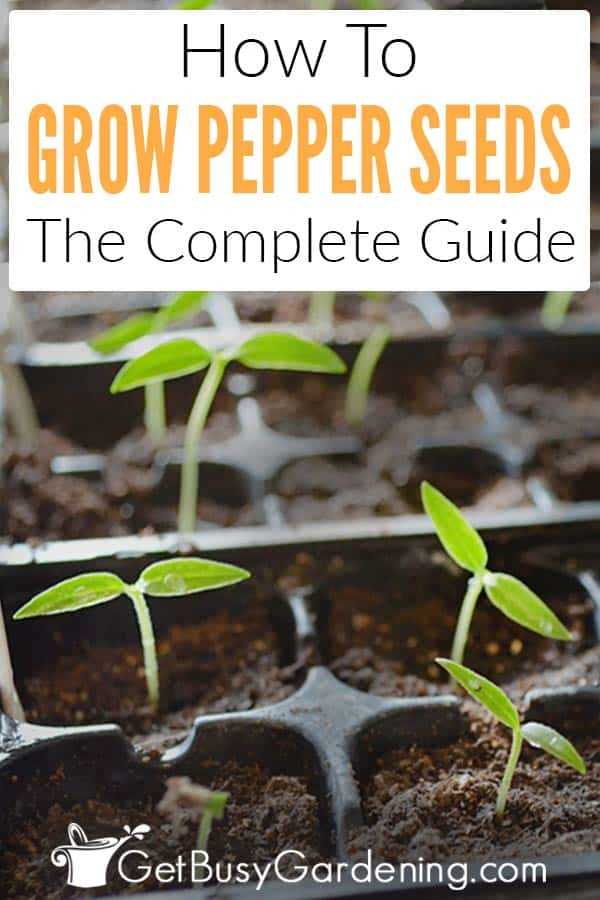
Starting pepper seeds indoors is a great way to get a head start on the growing season and ensure a plentiful harvest. Here are a few steps to follow when starting pepper seeds indoors:
- Gather the necessary supplies: Before you begin, gather all the supplies you will need. This includes seed trays or small pots, seed starting mix, seeds, a spray bottle, and plastic wrap.
- Prepare the seed trays or pots: Fill the seed trays or pots with a seed starting mix. Make sure the mix is lightweight, well-draining, and sterile.
- Sow the seeds: Make small holes in the seed starting mix and sow the pepper seeds according to the package instructions. Place 2-3 seeds in each hole, as not all seeds may germinate.
- Water the seeds: After sowing the seeds, use a spray bottle to gently water the mix. The mix should be moist but not soaked. Be careful not to dislodge the seeds.
- Cover the trays or pots: Cover the trays or pots with plastic wrap to create a mini greenhouse effect. This will help create a humid environment for the seeds to germinate.
- Provide warmth and light: Place the trays or pots in a warm location, preferably around 70-80°F (21-27°C). Additionally, provide 12-16 hours of light each day using grow lights or by placing the trays near a sunny window.
- Monitor and care for the seedlings: Keep an eye on the seedlings and make sure the mix remains moist. Once the seedlings emerge, remove the plastic wrap and continue providing them with light and water as needed.
- Harden off the seedlings: About 1-2 weeks before transplanting the seedlings outdoors, gradually expose them to outdoor conditions. Start by placing them outside for a few hours each day, gradually increasing the time and intensity of exposure.
- Transplant the seedlings: When the seedlings are strong and the danger of frost has passed, transplant them into the vegetable garden or larger pots. Be sure to space them properly to allow for adequate growth and airflow.
Following these steps will help you successfully start pepper seeds indoors and give your plants a healthy start for a bountiful harvest.
Prepare the Soil
Before you start planting pepper seeds in your vegetable garden, it’s important to prepare the soil to create the best growing conditions for your plants. Follow these steps to ensure your soil is ready:
1. Choose a Good Location
Select a sunny spot in your garden that receives at least 6-8 hours of direct sunlight per day. Peppers thrive in warm, sunny conditions, so make sure the location has good exposure to sunlight.
2. Clear the Area
Remove any weeds, rocks, or debris from the designated planting area. This will help prevent competition for nutrients and keep your pepper plants healthy. You can use a garden rake or hoe to clear the area.
3. Test the Soil
Conduct a soil test to check the pH and nutrient levels of the soil. Peppers prefer a slightly acidic soil with a pH range between 6.0 and 6.8. You can use a soil testing kit or send a sample to a local agricultural extension office for analysis.
4. Amend the Soil
Based on the results of your soil test, you may need to amend the soil to adjust its pH or nutrient levels. Add organic matter, such as compost or well-rotted manure, to improve the soil structure and fertility.
5. Loosen the Soil
Use a garden fork or tiller to loosen the soil to a depth of at least 8-10 inches. This will improve drainage and allow the pepper roots to penetrate the soil easily.
6. Create Raised Beds
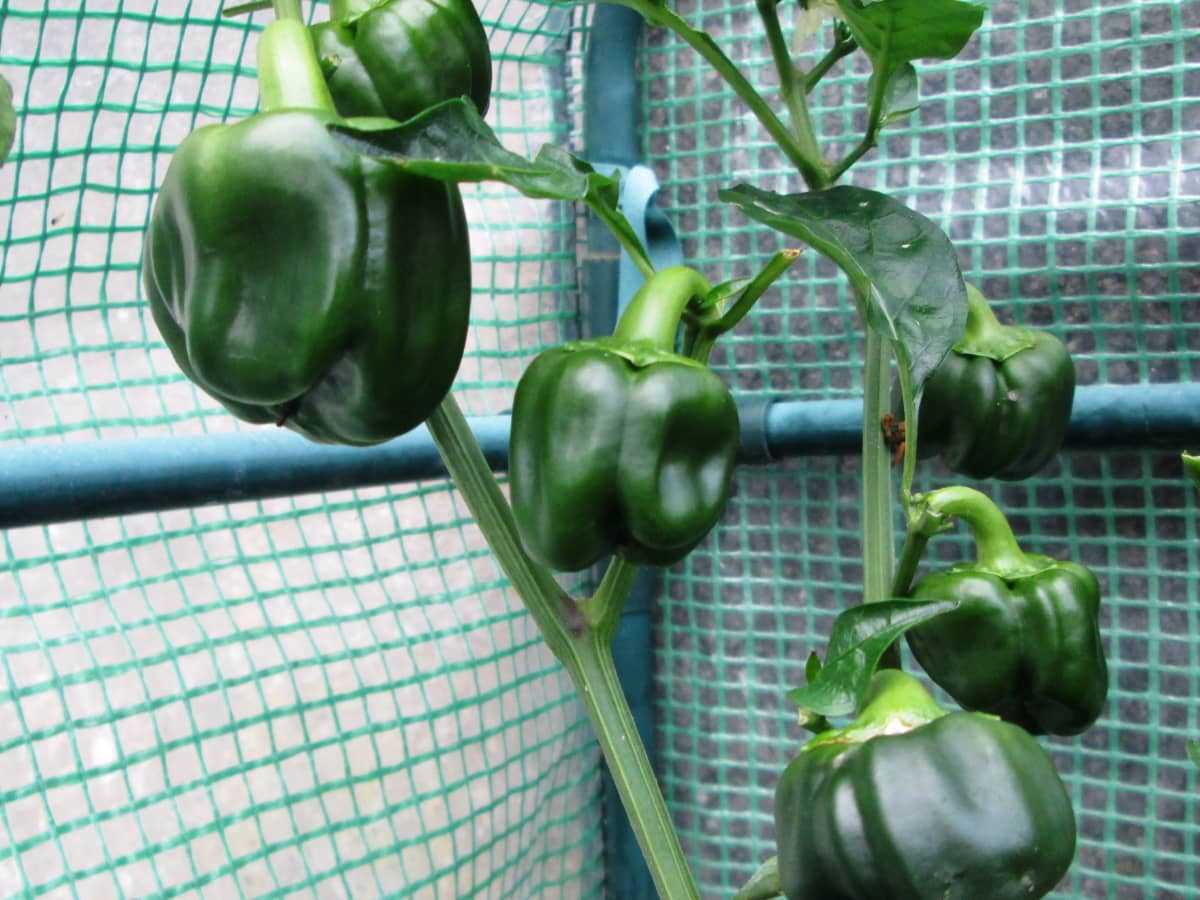
If your soil has poor drainage, consider creating raised beds for planting peppers. This will help prevent waterlogging and allow excess water to drain away from the roots of your plants.
7. Add Mulch
After planting your pepper seeds, apply a layer of organic mulch, such as straw or wood chips, around the plants. Mulch helps conserve moisture, suppresses weed growth, and moderates soil temperature.
8. Water the Soil
Before planting your pepper seeds, water the soil thoroughly to ensure it is evenly moist. This will provide a good starting environment for your seeds and promote healthy root development.
By following these steps to prepare the soil, you can create optimal growing conditions for your pepper plants and enjoy a successful harvest. Remember to water your plants regularly and provide them with proper care throughout the growing season.
Provide Adequate Water and Sunlight
To ensure the successful growth of your pepper plants from seeds, it is essential to provide them with adequate water and sunlight. Both water and sunlight are crucial for the photosynthesis process, which is responsible for the plant’s energy production and growth.
Watering
Pepper plants require regular watering, especially during the growing season. It is recommended to water them deeply and evenly, ensuring that the water reaches the plant’s root zone. However, be cautious of overwatering, as it can lead to root rot and other fungal diseases. To determine if your pepper plants need watering, check the soil moisture level by sticking your finger an inch into the soil. If it feels dry at this depth, it is time to water the plants.
Additionally, it is important to water the plants in the morning or early afternoon to allow the foliage to dry before evening. This helps prevent the development of fungal diseases, such as leaf spot and mildew, which thrive in damp conditions.
Sunlight
Pepper plants require an ample amount of sunlight to grow and produce healthy fruits. Ideally, they should receive at least 6-8 hours of direct sunlight per day. Select a location in your vegetable garden that receives full sun exposure and is free from obstructions that may shade the plants.
If your garden doesn’t have a suitable spot with full sun, you can use reflective materials like aluminum foil or white plastic to redirect sunlight towards the plants. This can provide them with the additional light they need to thrive.
It is important to note that peppers grown in partial shade may produce fewer fruits and have less vigorous growth compared to those grown in full sun. Therefore, providing adequate sunlight is crucial for the overall success of your pepper plants.
Transplant Seedlings
Once your pepper seedlings have reached a height of 3-4 inches and have developed their first set of true leaves, they are ready to be transplanted to your vegetable garden. Transplanting seedlings can be a delicate process, but with proper care, your peppers will continue to thrive.
Here are the steps to transplant your pepper seedlings:
- Choose a suitable location: Select a spot in your vegetable garden that receives full sunlight for at least 6-8 hours a day. The soil should be well-drained and rich in organic matter.
- Prepare the soil: Dig a hole in the garden bed that is deep and wide enough to accommodate the root ball of each seedling. Mix in compost or well-rotted manure to enrich the soil.
- Water the seedlings: Thoroughly water the seedlings a few hours before transplanting. This will help loosen the soil around the roots and make it easier to remove them from their pots.
- Remove the seedlings from their pots: Gently tap the bottom of each pot to loosen the root ball. Carefully slide the seedling out, holding it by the leaves or base of the stem to avoid damaging the delicate roots.
- Plant the seedlings: Place each seedling into a prepared hole, making sure the top of the root ball is level with the soil surface. Fill in the hole with soil, gently firming it around the base of the stem.
- Water again: Give the transplanted seedlings a thorough watering to settle the soil and help them establish their roots in their new location.
- Provide support if needed: If you are growing tall or vining pepper varieties, consider installing stakes or trellises to support their growth and prevent them from falling over.
- Maintain consistent watering: Keep the soil evenly moist, but not waterlogged, during the pepper plants’ establishment period. This will help them recover from transplant shock and promote healthy growth.
- Protect from pests and diseases: Monitor your pepper plants regularly for signs of pests or diseases. Take appropriate measures to control any issues that may arise, such as using natural pest repellents or applying organic fungicides.
By following these steps, you can successfully transplant your pepper seedlings into your vegetable garden and provide them with the best conditions for growth. With proper care and maintenance, your peppers will soon be ready to produce a bountiful harvest.
Space Plants Properly
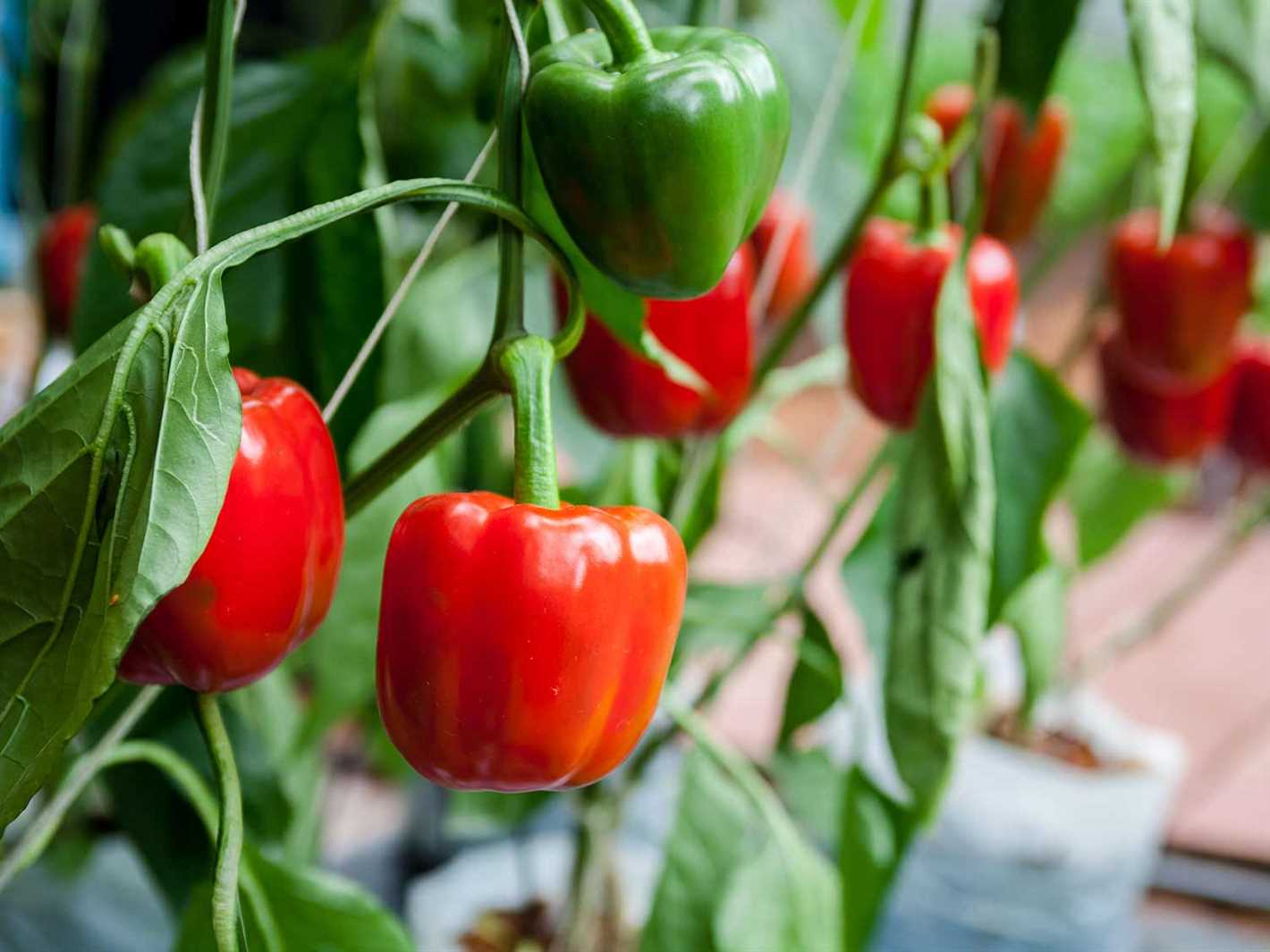
When growing pepper plants from seeds in your vegetable garden, it is important to space them properly to ensure they have enough room to grow and develop. Proper spacing allows for better air circulation, reduces the chances of diseases, and ensures that each plant receives the necessary sunlight and nutrients.
Consider the following tips for spacing pepper plants:
- Space plants at least 18 to 24 inches apart in rows.
- Leave a space of at least 36 inches between rows to provide easy access for watering, weeding, and harvesting.
- For small pepper varieties or container gardening, you can space plants closer together, around 12 to 15 inches apart.
- If you are using raised beds, make sure to space plants accordingly to allow for proper root development.
Benefits of proper spacing:
Properly spacing pepper plants has several benefits:
- Air circulation: Adequate spacing allows for better air circulation, reducing the risk of fungal diseases such as powdery mildew.
- Sunlight exposure: Each plant needs enough sunlight for optimal growth. Proper spacing ensures that the plants do not shade each other, allowing them to receive the necessary sunlight for photosynthesis.
- Nutrient uptake: Spacing plants properly allows their root systems to spread and access nutrients from the soil more efficiently.
Additional tips:
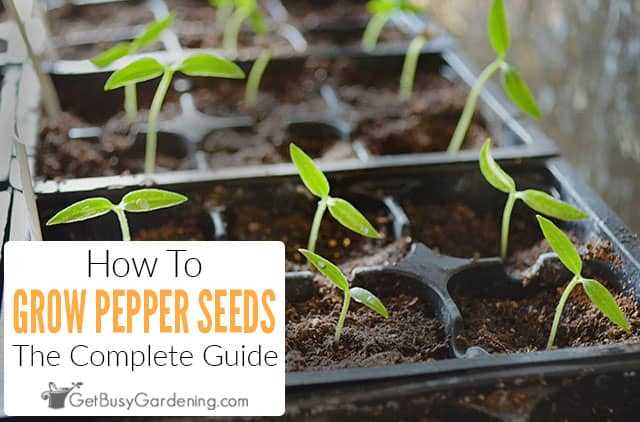
Aside from spacing, there are a few more tips to consider when planting pepper plants:
- Avoid overcrowding: Overcrowding can lead to competition for resources, stunted growth, and increased susceptibility to pests and diseases.
- Stake or cage plants: Pepper plants often benefit from staking or caging to support their heavy branches and fruits. This can also help reduce the risk of the plants falling over due to strong winds or heavy rain.
- Provide proper nutrition: Pepper plants are heavy feeders and require regular fertilization. Follow the recommended fertilizer application rates and schedule for optimal growth.
| Plant Type | Spacing |
|---|---|
| Bell peppers | 18 to 24 inches apart in rows |
| Hot peppers | 18 to 24 inches apart in rows |
| Small pepper varieties | 12 to 15 inches apart |
By spacing your pepper plants properly, you can create an ideal growing environment that promotes healthy growth and maximizes your vegetable garden’s productivity.
Support the Plants
Pepper plants can grow quite tall and heavy, so it’s important to provide them with adequate support to prevent them from falling over or breaking. Here are a few methods you can use to support your pepper plants:
Stakes
One of the simplest and most common methods of supporting pepper plants is by using stakes. Choose stakes that are sturdy and tall enough to support the mature height of your pepper plants. Drive the stakes into the ground a few inches away from the base of the plants, being careful not to damage the roots. Tie the stems of the plants to the stakes loosely using twine or strips of cloth, allowing room for growth.
Cages
Another option for supporting pepper plants is using cages. You can purchase tomato cages from gardening stores or make your own using wire fencing or concrete reinforcing mesh. Place the cages around the pepper plants when they are young and secure them to the ground using stakes or clips. As the plants grow, they will naturally grow through the openings in the cages, providing support and preventing them from sprawling.
Trellises
Trellises are another effective method for supporting pepper plants. You can use wooden or metal trellises, or even create your own by attaching wire mesh or netting to a wooden frame. Place the trellises behind the pepper plants and train the stems to climb up the trellises as they grow. This not only provides support but also helps to maximize growing space.
Mulching
In addition to physical supports, mulching around the base of your pepper plants can also help with stability. Mulch helps to retain moisture, control weeds, and regulate soil temperature. It can also provide a cushioning effect, reducing the risk of damage from wind or heavy rain.
By providing adequate support to your pepper plants, you can ensure that they grow healthy and productive, without any risk of falling over or breaking. Choose the method that works best for your garden and enjoy a bountiful harvest of delicious peppers!
Harvesting and Storage
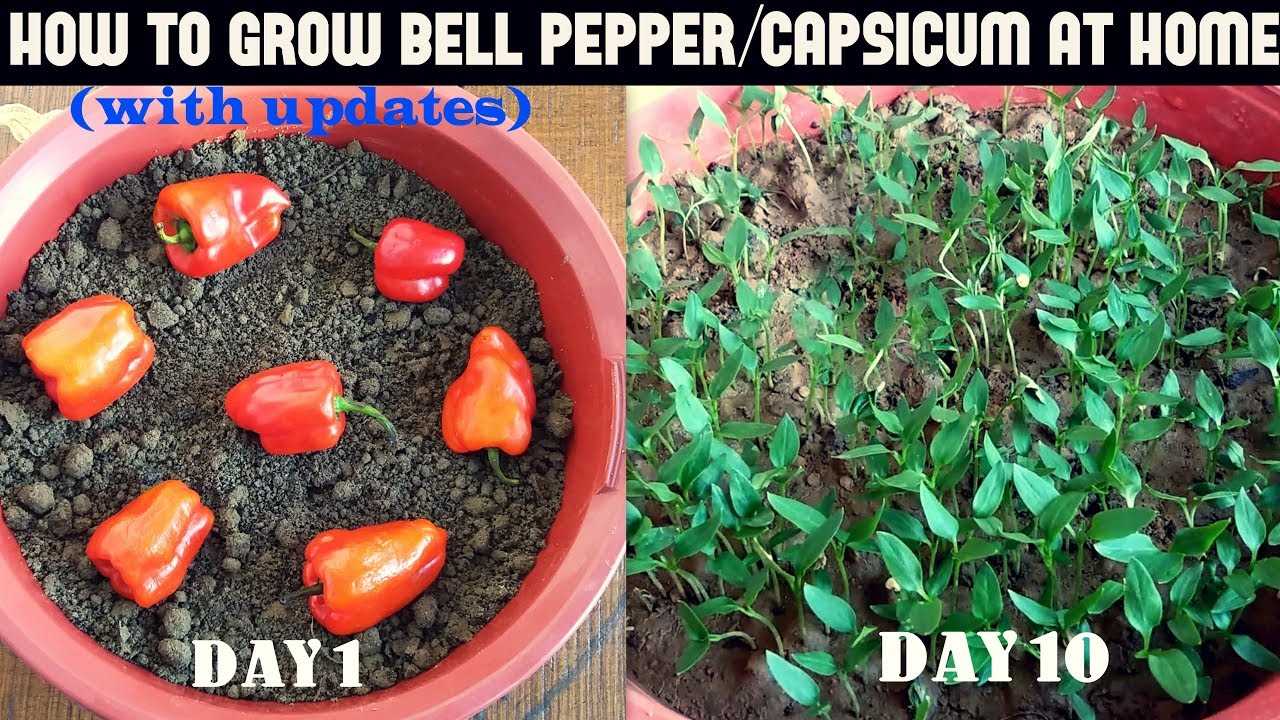
Knowing when and how to harvest your peppers is crucial for getting the best flavor and quality. Here are some tips on how to harvest and store your peppers:
1. Harvesting
- Peppers can be harvested when they reach their desired size and color. Most peppers start out green and change color as they mature.
- To harvest, use clean shears or a sharp knife to cut the pepper off the plant. Avoid pulling or twisting the fruits, as this can damage the plant.
- Harvesting peppers regularly encourages the plant to produce more fruits. Check your plants every few days and harvest any ripe peppers.
2. Storing
Proper storage is important to keep your peppers fresh and flavorful for an extended period. Here’s how you can store your harvested peppers:
- Wash the peppers gently in cool water to remove any dirt and debris.
- Allow the peppers to dry completely before storing them.
- You can store peppers in the refrigerator for up to two weeks. Place them in a plastic bag or airtight container to maintain humidity.
- If you have too many peppers to consume within two weeks, you can also freeze or preserve them for later use.
3. Freezing
To freeze peppers:
- Wash and dry the peppers.
- Remove the stem, seeds, and membranes from the peppers.
- Chop the peppers into desired sizes or leave them whole.
- Place the peppers in airtight freezer bags or containers, removing as much air as possible.
- Label the bags with the date and store them in the freezer for up to six months.
4. Preserving
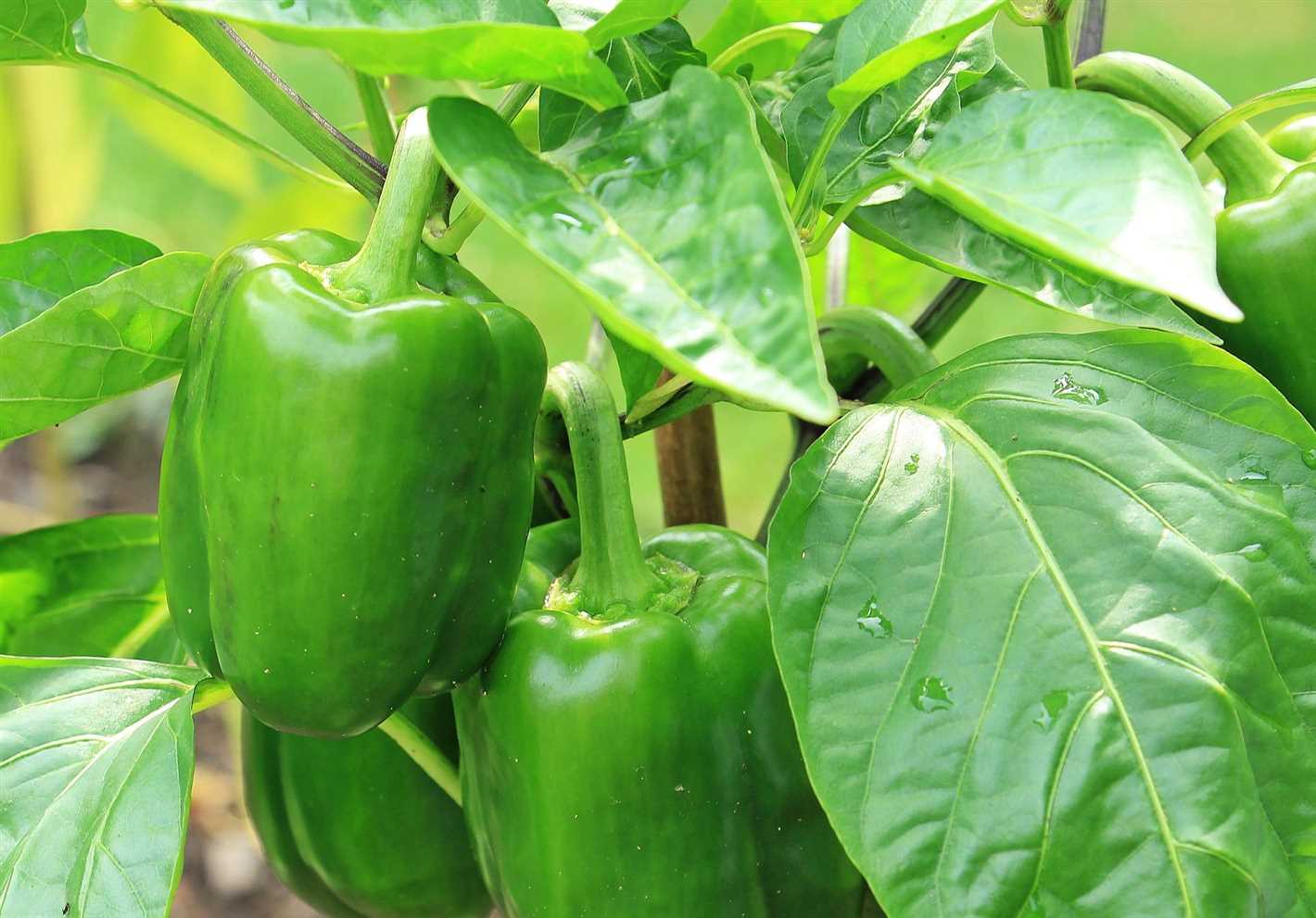
If you prefer to preserve your peppers in jars:
- Wash and dry the peppers.
- Blanch the peppers in boiling water for 2-3 minutes, then cool them in ice water.
- Remove the seeds and membranes from the peppers.
- Pack the peppers tightly into sterilized jars.
- In a saucepan, bring vinegar, water, and salt to a boil.
- Pour the hot brine over the peppers, leaving a 1/2-inch headspace.
- Seal the jars with sterilized lids and process them in a water bath canner for the recommended time.
5. Enjoying Your Peppers
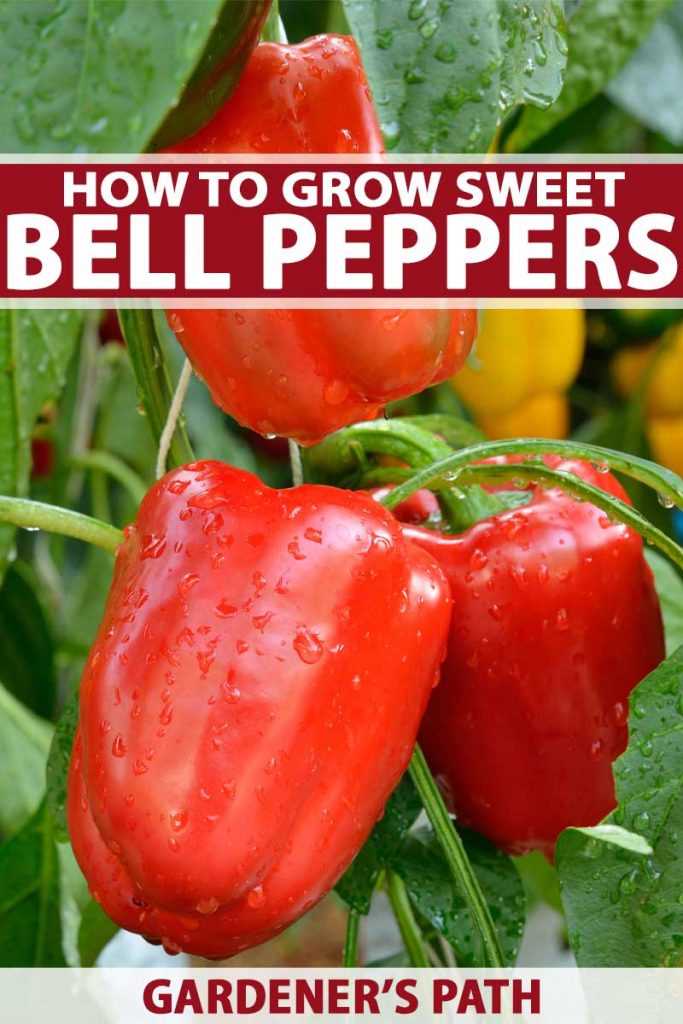
Now that you know how to harvest and store your peppers, it’s time to enjoy them! Peppers can be used in a variety of dishes, from salads and stir-fries to salsas and sauces. Experiment with different recipes and savor the delicious flavor of homegrown peppers!
“Question-Answer”
How long does it take for pepper seeds to germinate?
It usually takes pepper seeds about 7 to 14 days to germinate.
Do I need to soak pepper seeds before planting?
Soaking pepper seeds in warm water for a few hours before planting can help speed up germination.
What is the best time of year to start growing pepper plants from seeds?
The best time to start growing pepper plants from seeds is in the early spring, about 8-10 weeks before the last frost date in your area.
How deep should I plant pepper seeds?
Pepper seeds should be planted about 1/4 to 1/2 inch deep in well-draining soil.
Can I grow pepper plants from seeds indoors?
Yes, pepper plants can be grown from seeds indoors. You can start them in seed trays or small pots, and then transplant them outdoors once the weather is warm enough.







